IDP_DPSIR_StatePattern
Type of resources
Available actions
Topics
INSPIRE themes
Keywords
Contact for the resource
Provided by
Years
Formats
Representation types
Update frequencies
status
Scale
Resolution
-
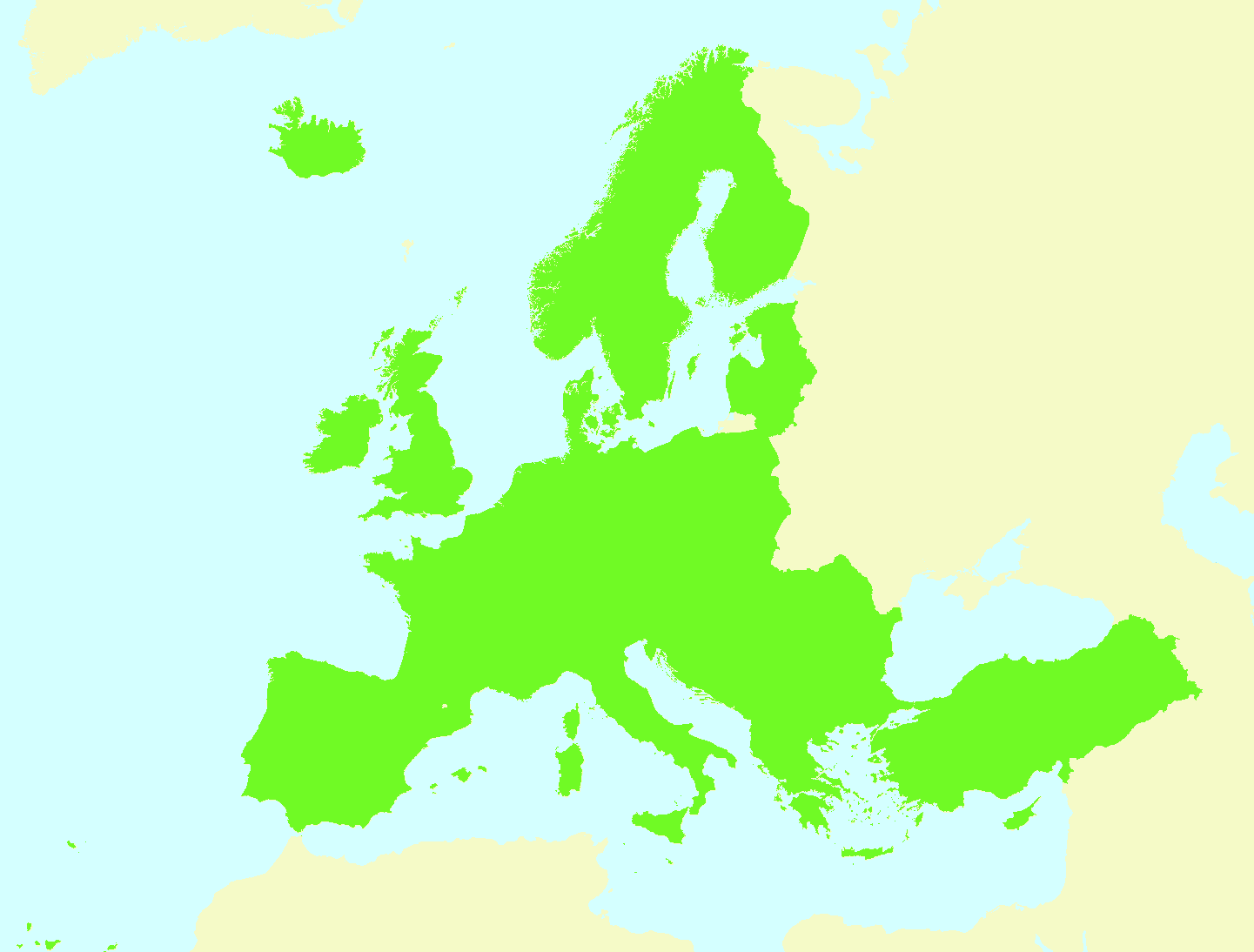
The CLC2012 land mask is a dataset derived from CLC2012 intended to be used as a reference dataset for data harmonisation within the EEA. It is a mask where all pixels with any valid land cover class value in CLC2012, except for class 523 - Sea and ocean, get a value of "1". The rest of pixels get a "0". In other words, land areas with CLC2012 data are identified with the value "1", whereas sea areas and areas with no CLC2012 data available get a value of "0".
-
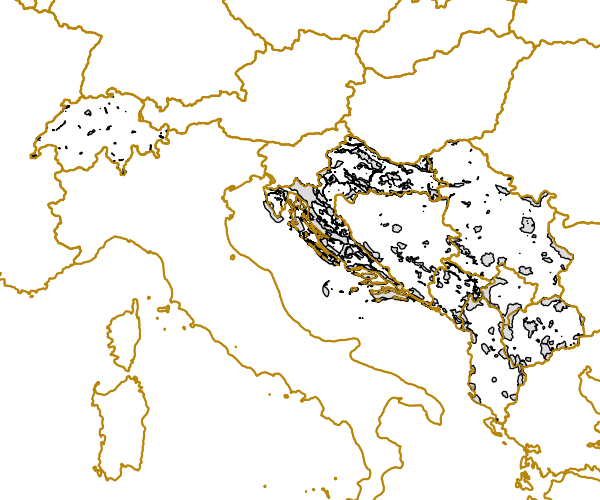
The Emerald Network is a network of Areas of Special Conservation Interest (ASCIs), which is to be established in the territory of the Contracting Parties and Observer States to the Convention on the Conservation of European Wildlife and Natural Habitats (Bern Convention), including Central and Eastern European countries and the EU Member States. For EU Member States, Emerald Network sites are those of Natura 2000.
-
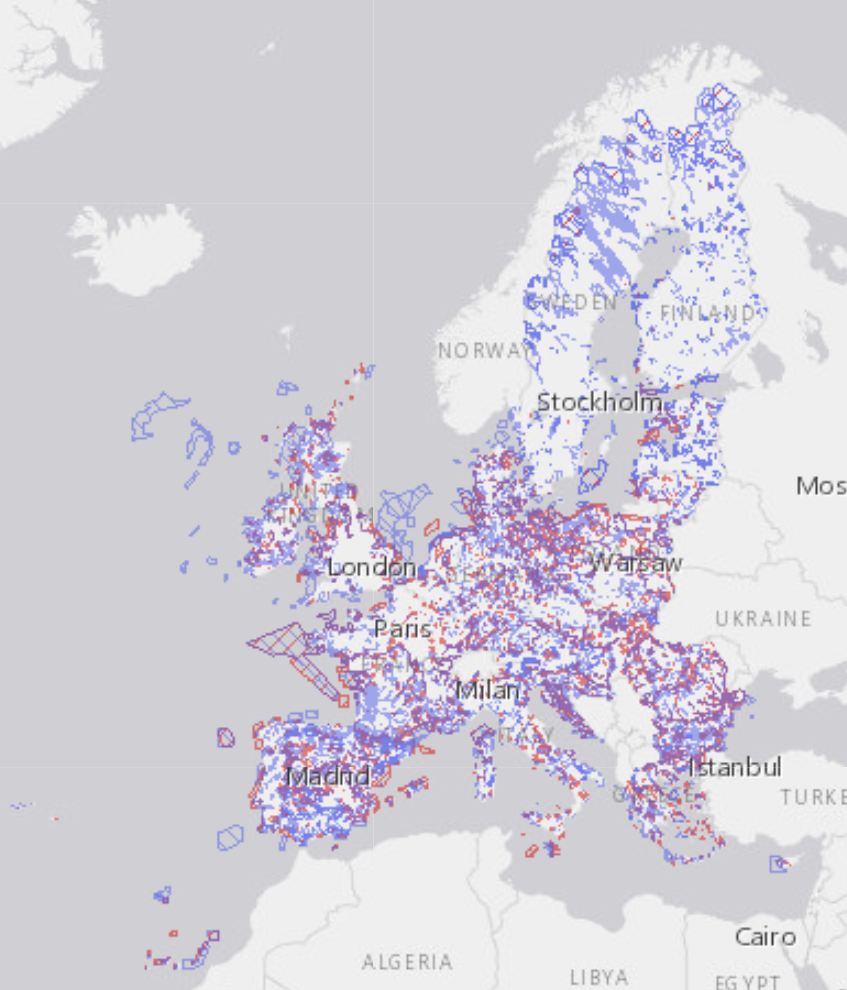
Natura 2000 is the key instrument to protect biodiversity in the European Union. It is an ecological network of protected areas, set up to ensure the survival of Europe's most valuable species and habitats. Natura 2000 is based on the 1979 Birds Directive and the 1992 Habitats Directive. This version covers the reporting in 2019. Natura 2000 is an ecological network composed of sites designated under the Birds Directive (Special Protection Areas or SPAs) and the Habitats Directive (Sites of Community Importance or SCIs, and Special Areas of Conservation or SACs). The European database of Natura 2000 sites consists of a compilation of the data submitted by the Member States of the European Union. This European database is generally updated once a year to take into account any updating of national databases by Member States. However, the release of a new EU-wide database does not necessarily mean that a particular national dataset has recently been updated. The descriptive data in the European database are based on the information that national authorities have submitted, for each of the Natura 2000 sites, through a site-specific standard data form (SDF). In addition to other site-specific information, the standard data form provides the list of all species and habitat types for which a site is officially designated. The spatial data (outlining the boundaries of sites) submitted by each Member State are validated by the European Environment Agency (EEA). Any problems identified through the above validation procedures in the national datasets are brought to the attention of the Member States concerned. However, it remains up to the Member States to decide whether to submit a revised dataset before the European database is updated. The EEA therefore cannot guarantee that all inconsistences detected in national datasets are removed in the European dataset. Please note that some Member States have submitted sensitive information that has been filtered out of this database. The following Member States have submitted sensitive information: Austria, Belgium, Cyprus, Estonia, Finland, France, Germany, Ireland, Italy, Latvia, Lithuania, Luxembourg, Malta, Poland, Portugal, Slovakia, Spain, Sweden and United Kingdom. This concerns mainly species associated to specific sites. All reference to these species has been removed from the related sites. If this sensitive information is necessary to your field of research, please contact the Member State administrations individually. You can find a compiled list of national or regional Natura 2000 websites at the following address: http://ec.europa.eu/environment/nature/natura2000/db_gis/index_en.htm#sites There are specific terms and conditions relating to the use of downloaded boundary data within the United Kingdom. If you intend to use the UK data, you must first agree to the end-user licence http://www.jncc.gov.uk/page-5232. Besides the web service link provided in the metadata, the following services provide information on species and habitat types inside the Natura 2000 sites: https://bio.discomap.eea.europa.eu/arcgis/rest/services/ProtectedSites/Natura2000Habitats/MapServer https://bio.discomap.eea.europa.eu/arcgis/rest/services/ProtectedSites/Natura2000Species/MapServer NOTE: The dataset has been corrected in June 2020 and the files uploaded on the SDI on 30 July 2020. Files downloaded before that date has one invalid site type code (G) that was corrected (to B) in June.
-
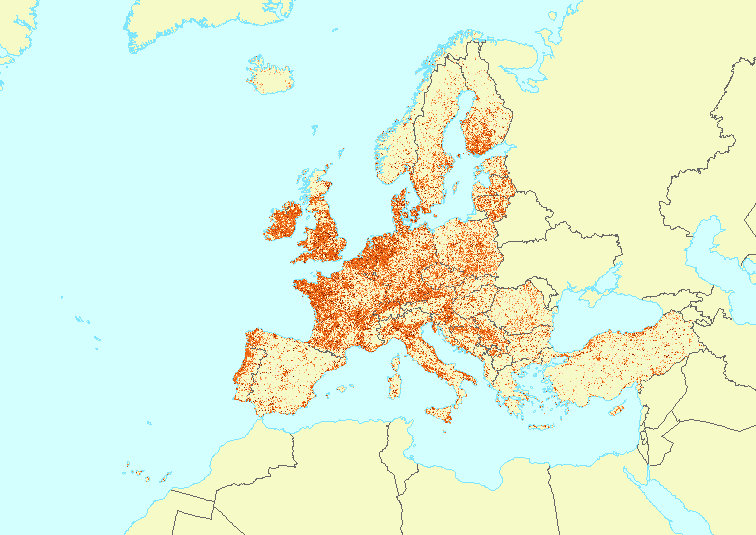
The degree of urban dispersion (DIS) characterizes the settlement pattern in a geometric perspective and is based on the distances between any two points within built-up areas (average taken over all possible pairs of points, up to a maximum distance called the horizon of perception). DIS is input to the Weighted Urban Proliferation (WUP) metric, which has three components: the percentage of built-up areas (PBA), the dispersion of the built-up areas (DIS), and land uptake per person (LUP). The new urban sprawl metric, named "Weighted Urban Proliferation“ (WUP) is based on the following definition of urban sprawl: the more area is built over in a given landscape (amount of built-up area) and the more dispersed this built-up area is in the landscape (spatial configuration), and the higher the uptake of built-up area per inhabitant or job (lower utilisation intensity in the built-up area), the higher the degree of urban sprawl. The DIS dataset is used in EEA's Urban Sprawl work indicating urbanisation impacts on the land system. It covers EEA39.
-

Percentage of built-up area (PBA) measures how large the built-up areas are (in % of the landscape). PBA is a component of the new urban sprawl metric, named "Weighted Urban Proliferation“ (WUP). WUP is based on the following definition of urban sprawl: the more area is built over in a given landscape (amount of built-up area) and the more dispersed this built-up area is in the landscape (spatial configuration), and the higher the uptake of built-up area per inhabitant or job (lower utilisation intensity in the built-up area), the higher the degree of urban sprawl. Weighted Urban Proliferation (WUP) metric has three components: the percentage of built-up areas (PBA), the dispersion of the built-up areas (DIS), and land uptake per person (LUP). Values for landscapes of differing sizes can be directly compared because PBA is an intensive metric, i.e., the value does not depend on the size of the landscape. The PBA dataset is used in EEA's Urban Sprawl work indicating urbanisation impacts on the land system. It covers EEA39.
-

The degree of urban dispersion (DIS) characterizes the settlement pattern in a geometric perspective and is based on the distances between any two points within built-up areas (average taken over all possible pairs of points, up to a maximum distance called the horizon of perception). DIS is input to the Weighted Urban Proliferation (WUP) metric, which has three components: the percentage of built-up areas (PBA), the dispersion of the built-up areas (DIS), and land uptake per person (LUP). The new urban sprawl metric, named "Weighted Urban Proliferation“ (WUP) is based on the following definition of urban sprawl: the more area is built over in a given landscape (amount of built-up area) and the more dispersed this built-up area is in the landscape (spatial configuration), and the higher the uptake of built-up area per inhabitant or job (lower utilisation intensity in the built-up area), the higher the degree of urban sprawl. The DIS dataset is used in EEA's Urban Sprawl work indicating urbanisation impacts on the land system. It covers EEA39.
-
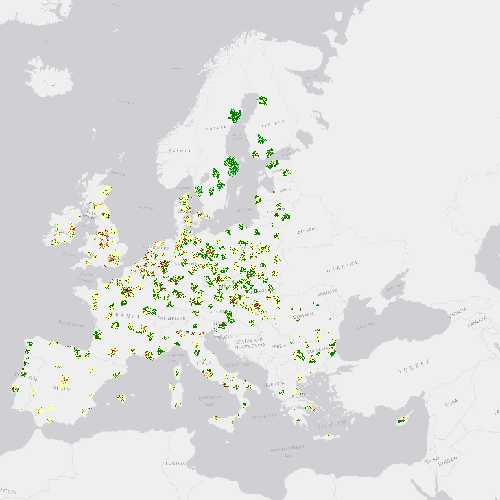
The European Urban Atlas provides reliable, inter-comparable, high-resolution land use maps for 305 Large Urban Zones and their surroundings (more than 100.000 inhabitants as defined by the Urban Audit) for the reference year 2006 in EU member states. The GIS data can be downloaded together with a map for each covered urban area and a report with the metadata for the respective area. Additional information (product description, mapping guidance and class description) can be found at https://www.eea.europa.eu/data-and-maps/data/urban-atlas/#tab-methodology. Urban Atlas is a joint initiative of the European Commission Directorate-General for Regional and Urban Policy and the Directorate-General for Enterprise and Industry in the frame of the EU Copernicus programme, with the support of the European Space Agency and the European Environment Agency.
-

The dataset illustrates the potential of soils to serve as a soil biodiversity pool. The potential is expressed as an indexed value from 1 (lowest potential) to 10 (highest potential). The potentials of soil biodiversity throughout Europe have been assessed and mapped by using critical thresholds of the selected variables (e.g. soil PH, texture, land cover among others) that potentially affect the conditions of soils for biodiversity and thus soil biodiversity levels. The dataset has been validated with existing data on soil biodiversity of different projects throughout Europe.
-

This data set shows the European forest area in 2012 at 100m spatial resolution, covering EEA39 countries. It is based on Copernicus HRL forest products at 20m spatial resolution and complies with the FAO forest definition (i.e. minimum mapping unit of 0.5 ha, minimum coverage of 10% and excluding land that is predominantly under agricultural or urban land use). After the selection of those pixels identified as forest by the HRL forest products and also compliant with FAO criteria, the forest area dataset at 100m was computed as a Boolean product (i.e. forest / non-forest). The value 1 (forest area) correspond to the pixels where forest is the major coverage; otherwise the pixel value is 0 (non-forest area).
-

This data set shows the European forest area in 2015 at 100m spatial resolution, covering EEA39 countries. It is based on Copernicus HRL forest products at 20m spatial resolution and complies with the FAO forest definition (i.e. minimum mapping unit of 0.5 ha, minimum coverage of 10% and excluding land that is predominantly under agricultural or urban land use). After the selection of those pixels identified as forest by the HRL forest products and also compliant with FAO criteria, the forest area dataset at 100m was computed as a Boolean product (i.e. forest / non-forest). The value 1 (forest area) correspond to the pixels where forest is the major coverage; otherwise the pixel value is 0 (non-forest area).
 RUC Geo-Data catalogue
RUC Geo-Data catalogue